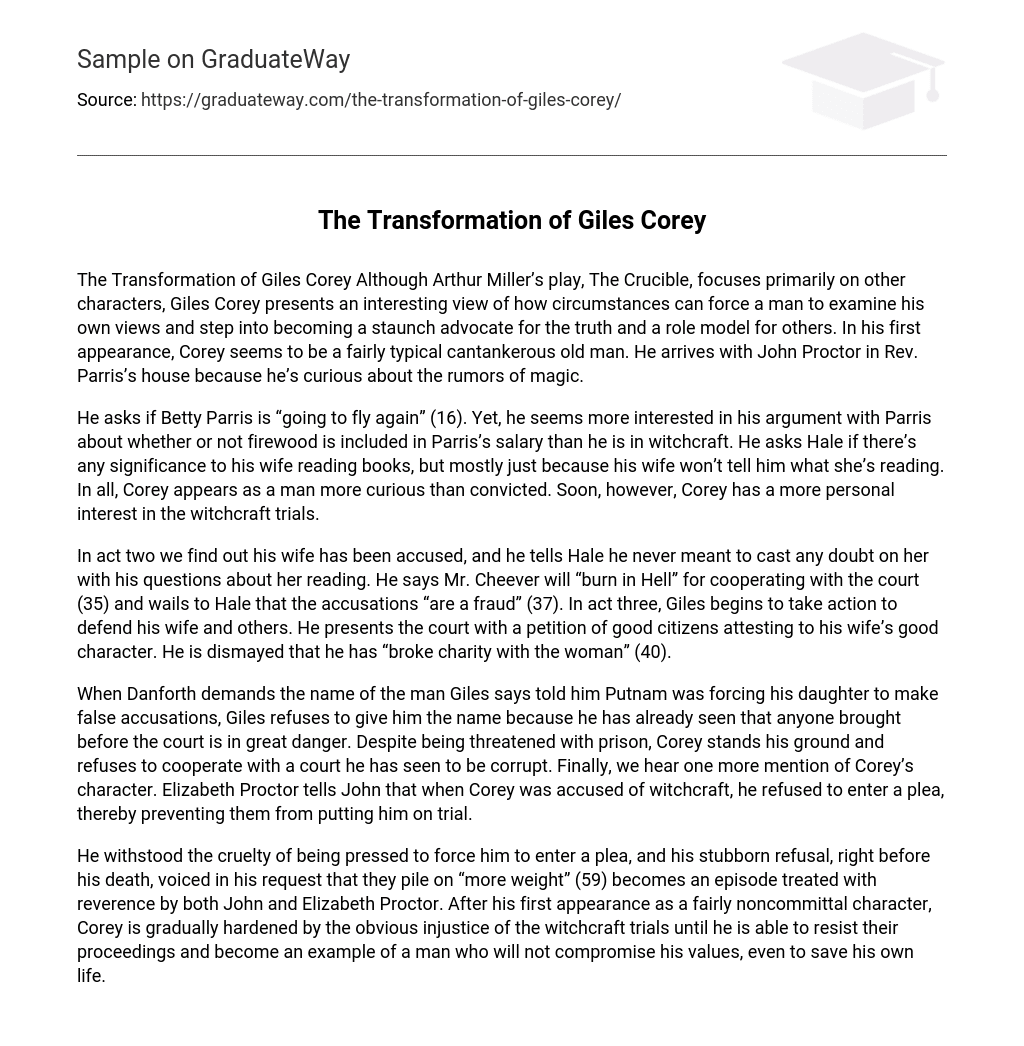Although Arthur Miller’s play, The Crucible, focuses primarily on other characters, Giles Corey presents an interesting view of how circumstances can force a man to examine his own views and step into becoming a staunch advocate for the truth and a role model for others. In his first appearance, Corey seems to be a fairly typical cantankerous old man. He arrives with John Proctor in Rev.
Parris’s house because he’s curious about the rumors of magic. He asks if Betty Parris is “going to fly again” (16). Yet, he seems more interested in his argument with Parris about whether or not firewood is included in Parris’s salary than he is in witchcraft. He asks Hale if there’s any significance to his wife reading books, but mostly just because his wife won’t tell him what she’s reading. In all, Corey appears as a man more curious than convicted. Soon, however, Corey has a more personal interest in the witchcraft trials.
In act two we find out his wife has been accused, and he tells Hale he never meant to cast any doubt on her with his questions about her reading. He says Mr. Cheever will “burn in Hell” for cooperating with the court (35) and wails to Hale that the accusations “are a fraud” (37). In act three, Giles begins to take action to defend his wife and others. He presents the court with a petition of good citizens attesting to his wife’s good character. He is dismayed that he has “broke charity with the woman” (40).
When Danforth demands the name of the man Giles says told him Putnam was forcing his daughter to make false accusations, Giles refuses to give him the name because he has already seen that anyone brought before the court is in great danger. Despite being threatened with prison, Corey stands his ground and refuses to cooperate with a court he has seen to be corrupt. Finally, we hear one more mention of Corey’s character.
Elizabeth Proctor tells John that when Corey was accused of witchcraft, he refused to enter a plea, thereby preventing them from putting him on trial. He withstood the cruelty of being pressed to force him to enter a plea, and his stubborn refusal, right before his death, voiced in his request that they pile on “more weight” (59) becomes an episode treated with reverence by both John and Elizabeth Proctor. After his first appearance as a fairly noncommittal character, Corey is gradually hardened by the obvious injustice of the witchcraft trials until he is able to resist their proceedings and become an example of a man who will not compromise his values, even to save his own life.





